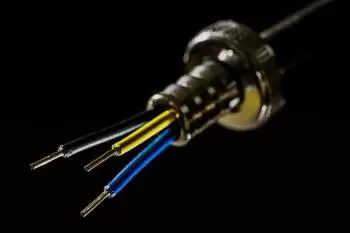
An electrical cable is an element that is intended to conduct the. Electric cables are made of materials with high electrical conductivity (usually copper, but there are also cables made of aluminum).
Electric cables are made up of:
- Electrical conductor: the conductor is the material through which electrical charges move.
- Insulation: insulation is an insulating layer that covers the conductor so that the electrical current does not escape and can only travel through the conductive material (copper or aluminum).
- Filler layer: The filler layer separates the conductor and the insulation. The purpose of this layer is to make the cable look round.
- Sheath: performs the function of protecting the cable from external elements.
Types of electric cables
Electric cables are classified according to the voltage to which they can be subjected:
- Very low voltage cables: manufactured for voltages up to 50 volts (V).
- Low voltage cables: voltages of up to 1000 volts (V) can be applied to them.
- Medium voltage cables: designed for voltages up to 30 kV.
- High voltage cables: built to work with an electrical voltage of up to 66 kV.
- Very high voltage cables: they work with voltages above 770kV.
How are electrical cables classified?
Within each type of electrical cable there is a wide variety of designs. If we focus on the cables that we will usually find in electrical installations, the cables are classified according to the following criteria:
- Number of conductive wires: they can have one or more conductive wires.
- Structure: cables can be flexible or rigid, round or flat, coaxial, braided ... etc.
- Conductor type: There is the insulated wire conductor, the bare wire conductor, the flexible cable or strand conductor.
- Coating properties: there are several types of coatings and there is even a nomenclature to differentiate them.
- Type of insulation: electrical cables can be thermoplastic or thermoset.
Types of electrical cable insulation
Almost all electrical cables are surrounded by insulation to prevent some from touching each other causing short circuits. Insulators also prevent electrical shocks to other objects or people.
The isolates are identified in the inscriptions that appear on it. These inscriptions are abbreviations that mean the following:
You can identify the type of insulation that a cable has in the inscriptions that appear on it, they are abbreviations of English. The meaning of these abbreviations is as follows:
- T (Thermoplastic): Thermoplastic insulation (this insulation is common to all cables).
- H (Heat resistant): indicates that the cable is resistant up to a temperature of 75 degrees Celsius or 167 ° Fahrenheit.
- HH (Heat resistant): Temperature resistant up to 90 ° C or 194 ° Fahrenheit.
- W (Water resistant): This insulator protects the cable from water and moisture.
- LS (Low smoke): This electric cable has a low content of polluting gases.
- SPT (Service parallell thermoplastic): This nomenclature is used to refer to a cord that is made up of two flexible and parallel cables with plastic insulation. This type of cable is also called a duplex cord.
The electrical cables used in offices and homes are: THN, THW, THHW and THWN.
What does the color of electrical cables mean?
In an electrical installation there are many cables that have different functions. In order to work better, some colors have been established for the insulators to better identify their function.
The colors of the electrical cable insulation are as follows:
- Green and yellow wire: it is the ground wire, with which the ground connection is made.
- Blue wire: it is the neutral wire. For older installations it must be taken into account that until 1970 the neutral wire was red.
- Brown wire: this wire is used for the phase. The phase wire can also be gray or black.
- Black wire: black color is also used as phase wire.
- White wire - This wire is neutral and connects to the transformer.
- Colored cables. All colored cables that do not have a stripe are cables that carry electrical current.
- Striped colored cables: like white cables, they are neutral. They are used to identify and relate the neutral wire to another colored wire.


